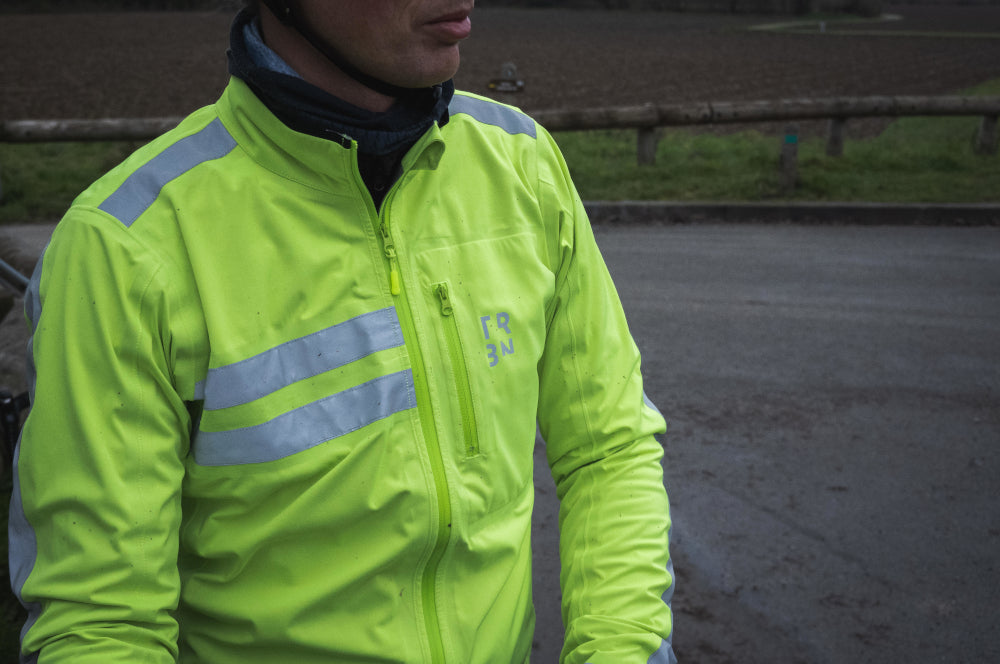
Tips For Riding A Bike In The Rain
Share
We have some tips and tricks to keep you safe while you ride
A Waterproof And Breathable Jacket
Forget the traditional raincoats that were certainly waterproof, but not at all breathable. If you weren't wet from the rain, you were definitely wet with perspiration. Today, it is possible to find breathable raincoats that allow you to ride in heavy rain without having a sensation of the oven.
Shoes
Another essential accessory if you want to ride a long time in rainy weather: waterproof shoes that will keep your feet dry. Because nothing is more unpleasant than pedaling with shoes soaked in water and the feeling of having the foot that goes "floc floc" with every pedal turn. And once wet, the feeling of cold feet comes very quickly, which adds to the inconvenience of riding in the rain.
Mudguards
An element that is becoming more and more fashionable for cyclists who do not want to deprive themselves of cycling whatever the weather. Full models that attach to the bike are the most effective. They are lightweight and most models fit quickly without tools. Even if it is not very aerodynamic, it is undoubtedly the best protection. This will save you muddy projections caused by the rotation of the wheels. You will stay much longer in the dry, you and your bike will be protected from mud splatter. Much of your bike will be spared from dirt. Ideal if you have a second bike (mule) that you only use in winter or in bad weather.The more minimal version is the plastic mudguard that attaches without any tools under the seat. The protection capability is lower than the above, it weighs nothing and offers nice hold in the wind.
Stay Visible
Do not forget to use visible clothing (reflective in case of dark weather), or even front and rear lights.
Braking
The braking distances in the rain are much greater in cycling than in dry weather. It is necessary to allow the skates time to dry the braking track before their action is really effective. Although carbon rims have made progress in recent years, you might prefer aluminum wheels, which are more effective in the rain. The distances are very long and the wheel locks up faster with carbon rims than with aluminum rims. To dry the rim, it will be necessary, before needing to brake, to pull the brakes slightly several times in a row.
Suspension
Some tires are specific for wet conditions, with an eraser that offers more grip in the rain. But it is not always easy to predict that you'll be riding in the rain and change tires for each shower.
Keep Tires Less Inflated
Less inflated, a tire or hose will have more contact with the ground and thus a better adhesion. This causes a slight loss of performance, but in turn, the grip will be much better.
Soak Tires With Vinegar
It might sound like a joke or an old grandmother's advice, still, the result is surprising. Wiping a rag soaked with vinegar on your tires before going out in the rain will have the effect of de-greasing it and considerably increasing its grip. But beware, the effects diminish over the output.
Cleaning
After a wet road trip, remember to clean your tires with a rag to get rid of flints and foreign bodies. At the same time, wipe your chain and oil it to prevent rusting.
Ground Hazards
When it rains, many dangers on the ground are likely to reduce adhesion. It will thus be necessary not to brake and not to incline the bike on: white stripes, cobbles, manholes, dead leaves, gas-oil stains on streets, and other debris. Be careful in roundabouts, especially those near service stations. Gas slips out easily from recently-filled cars in roundabouts. Fortunately, in rainy weather, the fuel stains show, causing characteristic iridescent reflections.
Beware Of The First Drops
It is not the heavy showers that are the most dangerous, but the small showers or drizzles. The hydrocarbons absorbed by the first layer of pavement go back to the surface of the bitumen. Less dense than water, they are driven from the thickness of the pavement and form an extremely slippery film, a mixture of dust, gum, hydrocarbons and water. This is known as the "summer ice", well known to bikers
Anticipate
Anticipation is one of the qualities needed to practice cycling. It's essential in case of rain to avoid the dangers mentioned above and be able to brake properly despite an extended stopping distance. You should not be surprised because in this case you could throw yourself on the brakes and quickly block your wheels at the very low grip. A fall is assured then.















